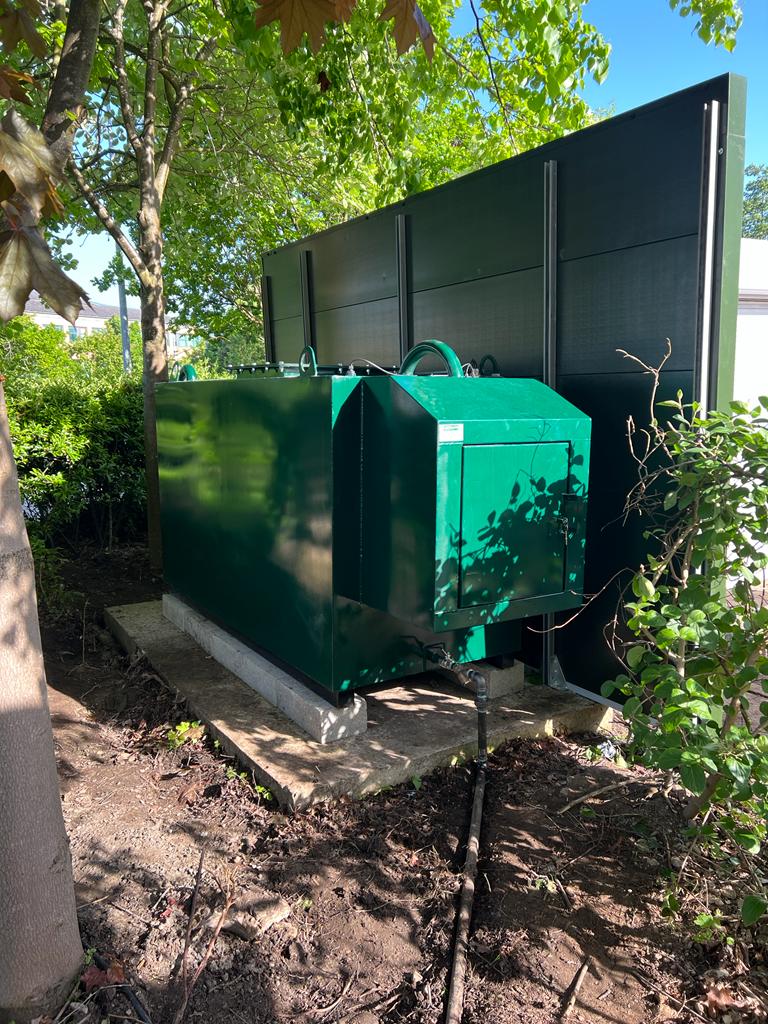Commerical Tank Replacement – A Guide
The object of this article is to give some information on how our team carry out a commercial tank replacement. This guide includes information on what the process is, and what to expect when our team carries out a tank replacement for you. It must be recognised that any works on fuel and oil tanks should be carried out by a competent and experienced contractor. The contractor should adopt practices in line with guidance such as ‘Design, Construction, Modification, Maintenance and Decommissioning of Filling Stations (4th Edition), OFTEC Technical Book 3, HSE Guidance and Best Practice and all legal duties set out under the Health and Safety at Work Act 1974.
An Introduction to Commercial Tank Replacement
There are many reasons why you would want to replace a commercial oil or fuel tank. For example, if the tank is no longer fit for purpose, if its old or you would just like to modernise. A tank replacement could be the answer. Not only will our team install your new tank, but we can dispose of the old one with minimal disruption to you. All tanks that we install will be done so in line with current building and environmental regulations. To give you peace of mind, every new oil tank is installed with a six year warranty. This is backed by OFTEC to ensure you have peace of mind. In regards to disposal of your old oil tank, this will be carried out in line with hazardous waste regulations. A certificate of decommissioning will be given to you for your old tank.
Commercial Tank Replacement Process
Your old tank will ideally be empty or close to being empty before the process of tank removal starts. Alternatively, you can choose to have your fuel stored locally and can then be pumped into the new one when installed. Firstly, our operatives will begin to pump out any liquid using commercial pumps and suction lines until bottomed out. The remaining residue can be sucked out using a commerical vacuum. The empty tank can then be removed whole via our mounted crane or cut into pieces using hot or cold cutting methods if access is not ideal. This can then be transported to our site and disposed.
For more information on tank removals click here for above ground tank removals or here for underground tank removals.
A new tank can then be moved into the old tanks location. If you would like it in a new location that can be arranged. It’s important to remember, you must position your fuel tank somewhere that minimises the risk of it being damaged by impact. For example, away from driveways, tanker turning circles and fork lift truck routes. You must make sure that any impact will not damage the container. This can be done by placing barriers or bollards around the tank.
Important Information
If your tank has underground pipework, you must make sure the pipework is protected from physical damage. This includes, preventing vibration damage from lorries driving over ground that has pipework installed underneath. Furthermore, placing a layer of specialist tape on the ground above the underground pipework can alert anyone digging that pipework is laid beneath.
If the pipework is made of a material that can be corroded such as steel or copper, you must also make sure it’s protected against corrosion, for example by using plastic coated pipe or by laying the pipework in a trench filled with a material that will drain water, like compacted sand.
For more information on Oil Storage Regulations click here.
The new tank will be connected by our engineers and your installation would be registered with OFTEC. This ensures that it meets local building regulations.
J. W. Hinchliffe (Tanks) Ltd
As a company, J W Hinchliffe (Tanks) Ltd have specialised in fuel and oil tank decommissioning for nearly 50 years. Using our own in-house team, we can offer a bespoke service to meet the needs of any client, from transport operators, to the construction and public sectors. If you would like to know more about the services we offer, please see our services page. If you would like to contact us directly, you can email [email protected] or call directly on 01132635163 where you can speak immediately to an experienced tank decommissioning engineer. All of our work is carried out in line with current best practice and legislation. You can read more industry news through organisations such as the APEA (Association for Petroleum & Explosives Administration) by clicking here. You can follow us across our many social media channels here – Linkedin, Instagram and Facebook

